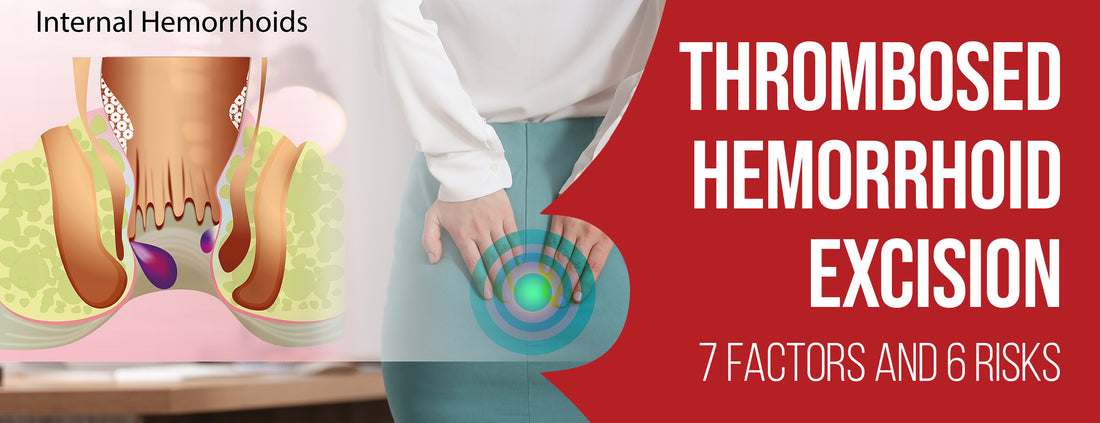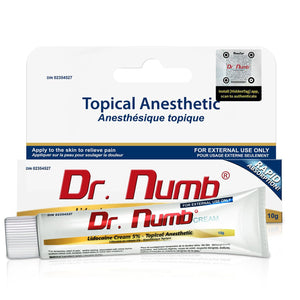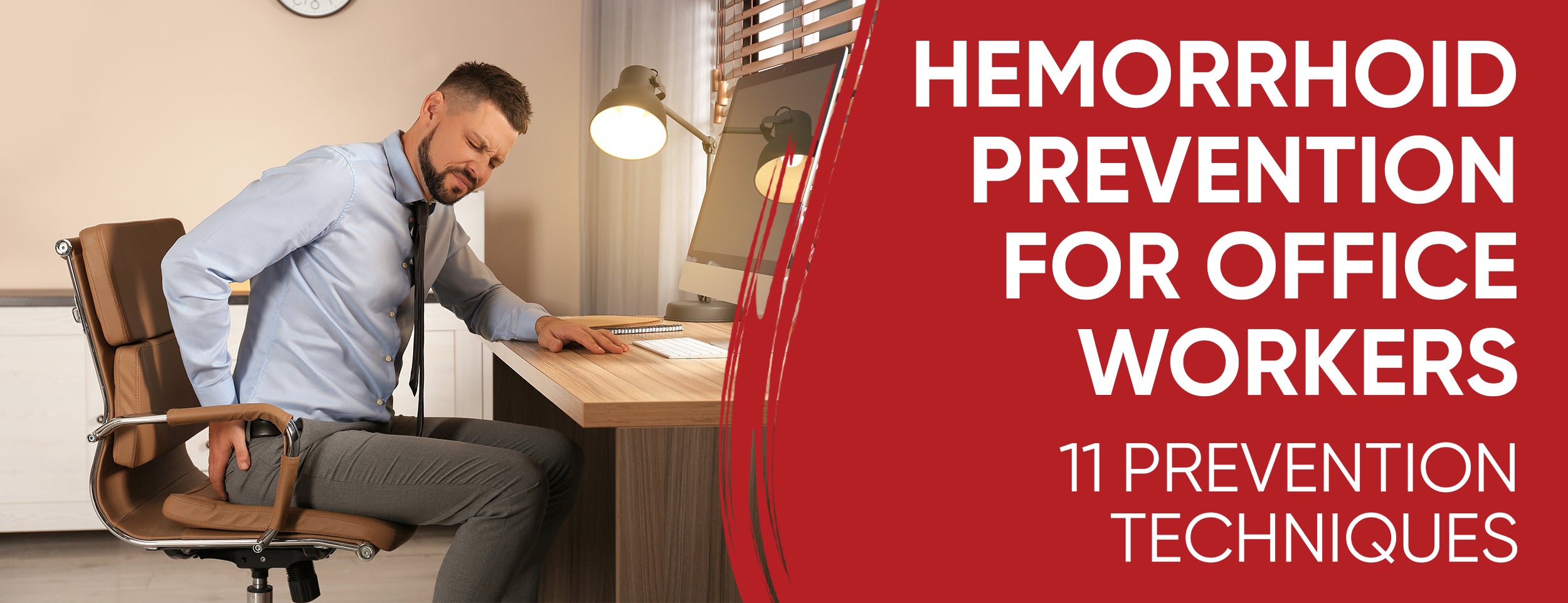Blood clots cause thromboses in hemorrhoidal veins, which obstruct blood flow and result in painful swelling of the anal tissues. Thrombosed hemorrhoids are not dangerous, but if they become ulcerated, they can cause rectal bleeding.
A small incision is made at the location of the blood clot to release the trapped blood. This procedure is called a thrombectomy, which takes only a few minutes to complete.
No anesthesia is required for this procedure. It is essential to note that a thrombectomy can only be performed within the first three days after the appearance of a thrombosed hemorrhoid.
This blog post will explore thrombosed hemorrhoid excision, its benefits, factors to consider before thrombosed hemorrhoid excision, and hemorrhoid excision risks.
Thrombosed Hemorrhoid Excision: 7 Factors to Consider Before

Thrombosed hemorrhoids refer to external hemorrhoids that have developed a blood clot, causing severe pain and discomfort. Where conservative treatments fail, thrombosed hemorrhoid excision may be recommended. Before proceeding with the procedure, several essential factors must be considered to ensure the best possible outcomes for the patient.
Consultation With a Healthcare Provider
Patients with thrombosed hemorrhoids should consult a healthcare provider for an evaluation and hemorrhoidectomy recommendation. The healthcare provider can determine the best treatment plan after examining your medical history, conducting a physical exam, and performing diagnostic tests.
The severity of Symptoms
Your symptoms' severity is one of the most important factors to consider. Symptoms that are mild to moderate may be treated with non-surgical treatments such as topical creams and ointments, which may be more appropriate. Only when your symptoms are severe and negatively affecting your quality of life should you consider surgical intervention.
Overall Health
Your overall health is another critical consideration. If you have underlying medical conditions such as heart disease, diabetes, or obesity, you may be at increased risk for surgical complications. Before undergoing surgery, ensure that your healthcare provider is aware of any prior medical history and current health concerns.

Surgical Risks
All surgical procedures carry risks, and thrombosed hemorrhoid excision is no exception. Potential risks include bleeding, infection, and damage to surrounding tissue. Your surgeon should discuss these risks with you and address any concerns you may have before the procedure.
Recovery Time
Thrombosed hemorrhoid excision is typically an outpatient procedure, but recovery time can vary. You should discuss what to expect during recovery with your surgeon and plan accordingly. You may need to take time off work or adjust your daily routine during this time.
Cost
The cost of thrombosed hemorrhoid excision depends on several factors, including your insurance coverage and the complexity of the procedure. It is essential to discuss the cost of the system with your healthcare provider and your insurance company before undergoing surgery.
Alternative Treatments
Alternative treatments should be considered before undergoing surgery. Non-surgical treatments such as warm baths, over-the-counter pain relievers, and dietary changes may be effective for some patients. You should discuss these options with your physician before you undergo surgery.
6 Benefits Excision For Thrombosed Hemorrhoids

A thrombosed hemorrhoid excision can offer a range of benefits that can quickly relieve your symptoms and help you recover faster. Here are some benefits of thrombosed hemorrhoid excision:
Quick Relief
A thrombosed hemorrhoid excision is a surgical procedure that removes the blood clot from the hemorrhoid. This relieves the pressure and reduces the pain. The process is quick, and most patients experience significant relief immediately after.
High Success Rate
Thrombosed hemorrhoid excision has a high success rate. According to studies, over 90% of patients experience improved symptoms after surgery.
Minimal Recovery Time
The recovery time for a thrombosed hemorrhoid excision is minimal. The majority of patients have no problem returning to their normal routine within a few days. However, avoiding heavy lifting or strenuous activity for a few weeks after the surgery is essential.
Low Risk of Complications
Thrombosed hemorrhoid excision is a safe procedure with a low risk of complications. Infection, bleeding, and scarring are rare.
Improved Quality of Life
A thrombosed hemorrhoid excision can significantly improve your quality of life. The relief from the pain and discomfort can enhance your mood, sleep, and overall well-being.

Long-Lasting Results
Thrombosed hemorrhoid excision provides long-lasting results. Most patients experience permanent relief from their symptoms after the surgery.
6 Risks of excision of a thrombosed hemorrhage
Thrombosed hemorrhoid excision is a standard surgical procedure that involves removing swollen and painful hemorrhoids. It is a safe procedure, but like any other surgery, it carries certain risks.
Bleeding
One of the most common risks of thrombosed hemorrhoid excision is bleeding. Although it is expected to experience some bleeding with the procedure, excessive bleeding is a cause for concern. If the bleeding persists for over a day, you should immediately consult your doctor.
Infection
Another risk associated with thrombosed hemorrhoid excision is the possibility of infection. Surgical sites can become infected if good hygiene practices are not followed. Signs of infection include fever, chills, and swelling. Contact your physician if you experience any of the following symptoms after the procedure.
Scarring
The surgical removal of external hemorrhoids can cause scarring. Although it is usually not a cause for concern, some patients may experience discomfort or itching because of the scarring. This can be managed with topical creams or ointments prescribed by your doctor.
Fecal Incontinence
A thrombosed hemorrhoid excision can cause fecal incontinence, which is a rare side effect of thrombosed hemorrhoid excision. This can happen if the surgery damages the anal sphincter muscles. Inform your physician immediately if you experience bowel control issues after the procedure.
Urine Retention

Urine retention, or the inability to urinate after the procedure, is another risk. This can be because of anesthesia or swelling around the bladder. If you cannot urinate after the process, contact your doctor immediately.
Allergic Reactions
It is possible for some patients to experience an allergic reaction while under anesthesia. If you have a history of allergies, inform your doctor beforehand to avoid complications.

Conclusion
Thrombosed Hemorrhoid Excision may sound scary, but it could be your saving grace if you have hemorrhoids. If you are experiencing symptoms of hemorrhoids, talk to your doctor about your options.
While many treatment options are available, Thrombosed Hemorrhoid Excision can provide quick relief. A healthy lifestyle and good hygiene habits can help prevent and reduce hemorrhoids.










![Precautions & 6 Steps to Draining Thrombosed Hemorrhoids [DIY]](http://drnumb.ca/cdn/shop/articles/Draining_Thrombosed_Hemorrhoid_Yourself__6_Steps_8_DIY_Tips_With_Precautions.jpg?v=1713931775)

